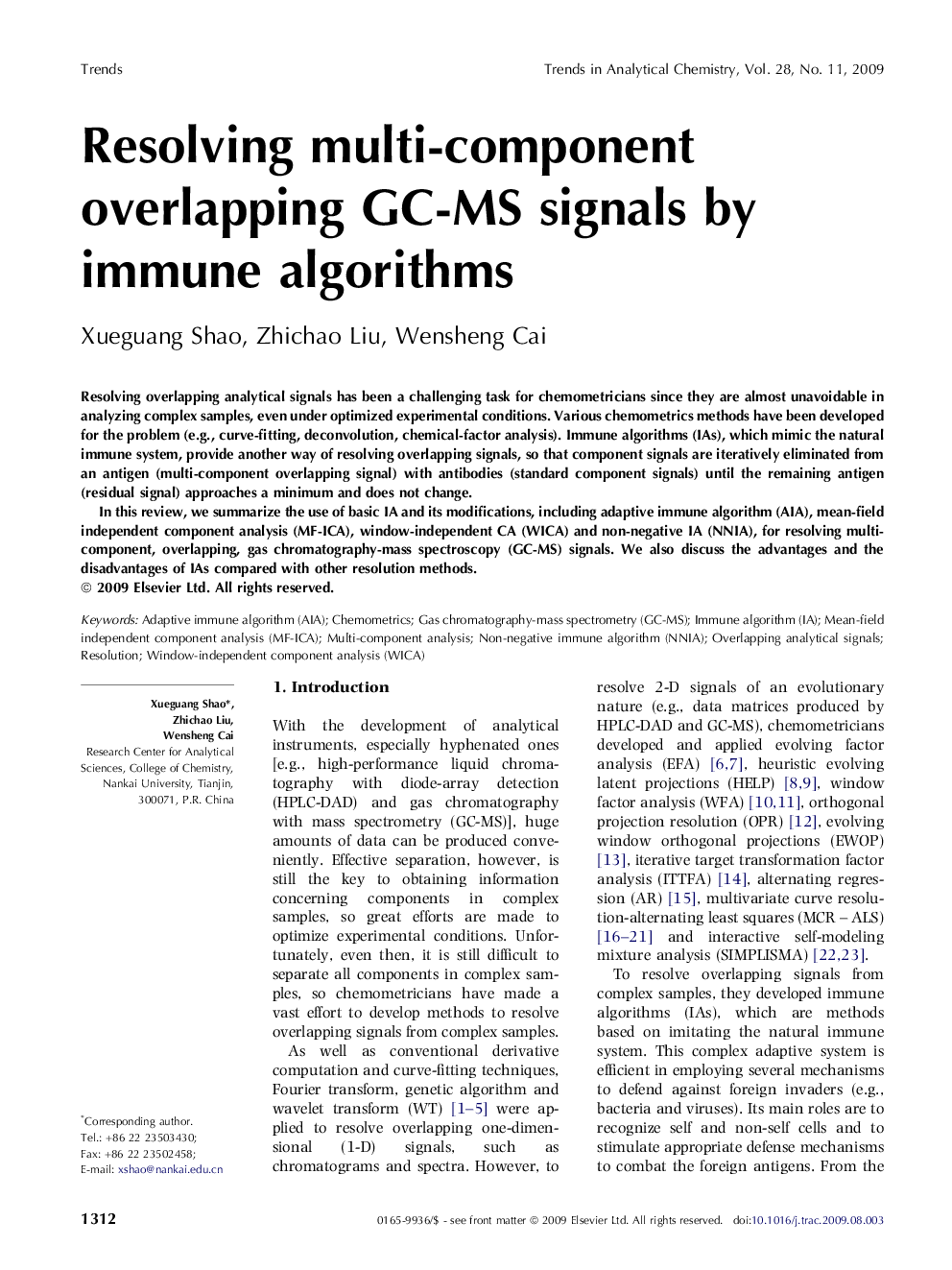| کد مقاله | کد نشریه | سال انتشار | مقاله انگلیسی | نسخه تمام متن |
|---|---|---|---|---|
| 1248391 | 970429 | 2009 | 10 صفحه PDF | دانلود رایگان |

Resolving overlapping analytical signals has been a challenging task for chemometricians since they are almost unavoidable in analyzing complex samples, even under optimized experimental conditions. Various chemometrics methods have been developed for the problem (e.g., curve-fitting, deconvolution, chemical-factor analysis). Immune algorithms (IAs), which mimic the natural immune system, provide another way of resolving overlapping signals, so that component signals are iteratively eliminated from an antigen (multi-component overlapping signal) with antibodies (standard component signals) until the remaining antigen (residual signal) approaches a minimum and does not change.In this review, we summarize the use of basic IA and its modifications, including adaptive immune algorithm (AIA), mean-field independent component analysis (MF-ICA), window-independent CA (WICA) and non-negative IA (NNIA), for resolving multi-component, overlapping, gas chromatography-mass spectroscopy (GC-MS) signals. We also discuss the advantages and the disadvantages of IAs compared with other resolution methods.
Journal: TrAC Trends in Analytical Chemistry - Volume 28, Issue 11, December 2009, Pages 1312–1321